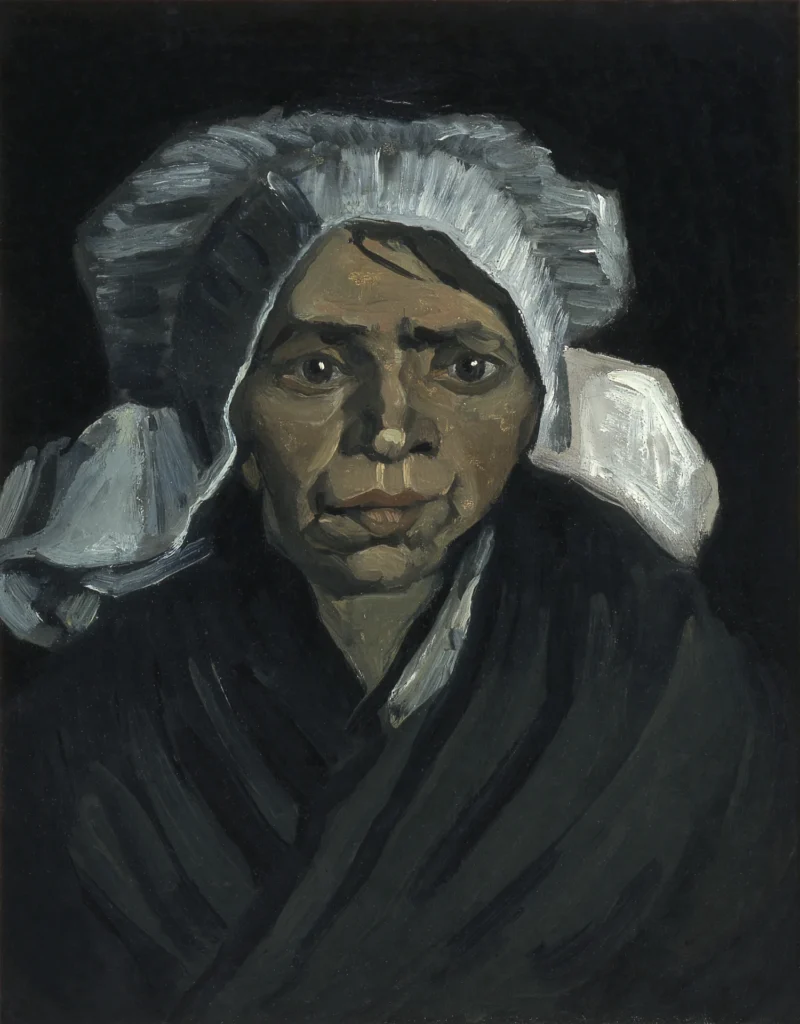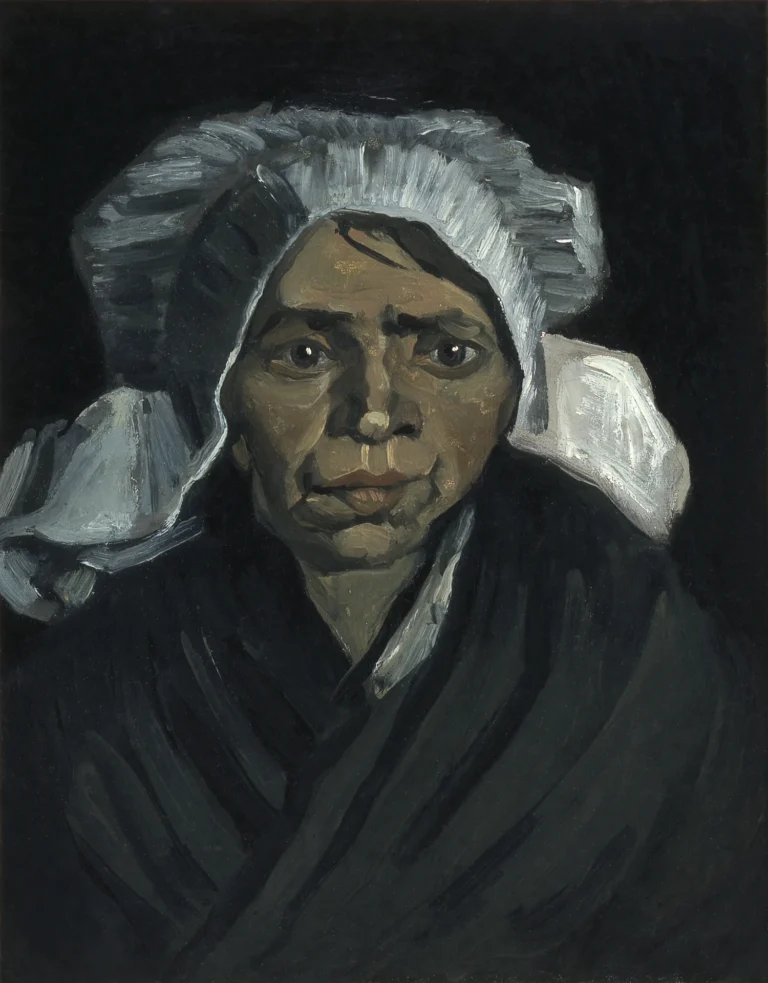Head of a Peasant Woman with a White Cap
Head of a Peasant Woman with a White Cap is an expressive portrait painted in 1885, showcasing Van Gogh's interest in the working-class individuals of his time. The artwork features a peasant woman adorned with a traditional white cap, her face characterized by deep lines and a thoughtful expression. Van Gogh employs earthy tones and strong brushwork to convey the strength and resilience of his subject, capturing the essence of rural life. The painting reflects Van Gogh's empathetic view of laborers and the beauty he found in their everyday existence.
1885
About the Artwork
Painted during Van Gogh's early years in Nuenen, Head of a Peasant Woman with a White Cap exemplifies his focus on peasant life and the hardships faced by rural communities. This period was significant for Van Gogh as he sought to portray the dignity of the working class, drawing inspiration from the lives of those around him. The woman’s white cap symbolizes her connection to the land and her role within the community.
Did You Know
Did you know that Van Gogh created over 2,100 artworks, including around 860 oil paintings, in just a decade? His creative burst began at age 27 and continued intensely until his passing at 37. In that brief span, he established himself as one of the most iconic artists in history.
Van Gogh was a prolific letter writer, especially to his brother Theo, and many of these letters offer a deep insight into his thoughts, struggles, and artistic philosophies. His letters are considered some of the most revealing documents on his personality and artistic journey.
The woman depicted in the “Head of a Peasant” portrait is thought to be a local model, showcasing Van Gogh’s commitment to portraying real-life individuals and their stories!










